Do you have plantar fibromas? The foot can have a frequent swelling or growth due to a localized appearance of a nodule, lump, tumor, cyst or contusion. The condition could be due to numerous conditions that entail inflammation, infection or trauma.
Get more insight about the causes of bumps on the bottom of feet, painful bumps on the bottom of the foot, the effect of lumps, pictures as well as various treatments of the conditions leading to the development of bumps on the bottom of the foot.
What Causes Bumps On Bottom of Feet
The causes include:
- Plantar Fibroma
This is a foot condition where there is the development of nodule inside the foot plantar fascia which is described as a group of tissues that run along the toes to the heel within the foot. The condition requires immediate treatment for it to get heal and it can affect both feet.
The condition begins as a benign and brings out a visible sign of a bump on the foot that has either painless or painful. It is recommended to consult a medical professional to determine the cause of the development of the bump on the foot.
Treatments
Treatments associated with plantar fibroma are numerous ranging from surgical to non-surgical. The treatments that involve non-surgical can also be effective to alleviate the pain associated with the bumps but according to the research, they cannot cause the growth to diminish or disappear.
Some of the common non-surgical treatment involves:
- Steroid injections whose main function is to shrink the growth and reduce pain but the nodule will not cease in the long run.
- Orthotic devices help in reducing the pain that is associated with the weight of the fibroma
- Physical therapy is a treatment that involves the use of anti-inflammatory medication tropically into the fibroma, with no need for an injection.
Note: in case the nodule keeps on increasing in size and pain also increases, it is recommended to consult health care professional for further evaluations or conduct surgery in order to remove the mass of the fluid filled bump.
- Corns and Calluses
These are growth that develops on the skin of the foot where it attempts to resist pressure and friction. In the process of doing so, it ends up developing hardened, thick layers of skin. These types of bumps mostly develop on the feet and toes but in some instances, they can also develop on fingers and hands.
From a cosmetic point of view, these growths are unsightly and may cause a lot of embarrassment in some instances. There is no treatment of the growth but it is advisable for healthy individuals to stop the condition or activity causing the friction.
Individuals with a problem with blood flow, they have the risk of developing complications from calluses and corns. It is recommended to proper medical care from a professional.
Treatments
Surgery is the only processes that can help get rid of corns and calluses. Also, there are ways that are non-surgical and can help reduce or protect the foot not to develop bumps. Some of the ways include:
- Moleskin pads that are used to relieve or alleviate the pain caused by corns
- Medicinal patches whose aim is to remove calluses.
- It is recommended to soak the feet in warm and soapy water in order to soften the corns and/or calluses. This also helps to remove thick skin.
- Plantar Warts
There are some warts that develop on the bottom of the foot where the pressure is mostly held, and in the process, it results in the development of a hold growth on the balls or heels of the feet. Plantar warts are mostly caused by human papillomavirus, which enters the feet through small cracks and cuts on the bottom of the feet.
According to some studies, plantar warts on the bottom of the foot do not raise concern and in most cases do not require treatment. In case of discomfort or pain, certain treatments can be used to alleviate the symptoms.
Treatments
Warts usually disappear on their own without any form of treatment. If they do not diminish, then the following treatments can be used;
- Duct tape. Place a small strip of duct tape over the wart and leave it there for around six days. Remove the tape after that and soak the wart in warm, soapy water, then rub it using a nail file or similar apparatus. Repeat this until the wart is gone.
- Liquid nitrogen to freeze the wart off of the foot
- Laser surgery to remove the wart
- Medication to assist the immune system in wart eradication
- Over-the-counter wart treatments such as salicylic acid and cryotherapy.
- Athlete’s Foot
This is foot condition that results from fungal infection especially to people who those sweaty feet in tight fitting shoes and it often begins in between toes. It is also known as tinea pedis and it can result in the formation of rashes on the affected area, itching, blisters, ulcers, or occasionally bump on bottom of foot.
There are some conditions known as the moccasin type that is known to have similar characteristics like that of eczema to form on the soles and sides of the feet. The condition is highly contagious and can be passed from one individual to another through infected floors, clothing, or towels.
Treatments
The use of anti-fungal ointment, powder, lotion, or spray is mostly used to help get rid of mild instances. In case of severe situations, it is recommended to use stronger medication may be required via prescription and applied to the feet, or taken orally.
- Foot Blisters
Formation of blisters are a result of too much friction on the foot, often caused by tightly fitting or new shoes, which cause the outer layers of skin to rub against each other, separates, and proceed to fill with liquid.
Treatments
In the event that the condition is not very excruciating/ painful then it is best encouraged to not pop the blister, as the outer layer of skin, helps to inhibit entry of infections. Ensure that you cover the blister with a plaster, or tape.
- Contact dermatitis
This is also not left out among the causes. It is brought about by skin’s contact with irritants or so called allergens. Common irritants include:
- The glues or chemicals found in shoes
- Neomycin found in antibiotic ointments
- Poison ivy
- Adhesive tape
- Perfumes or other chemicals used in skin and nail care products
To add, a condition that is basically dry skin could also precipitate itchiness of your feet. This is technically called xerosis cutis. The condition takes place secondary to a medical condition like atopic dermatitis. It can also be brought about by external conditions.
Dry skin has also been linked to the normal aging process. Also, a diet that is devoid of certain vitamins or essential fatty acids and the use of harsh and unfriendly cleansers could give you dry skin. The condition of dryness tends to get worse during the winter times and therefore calls for more creams and lotions.
- Scabies
Could also result in the formation an itchy skin. The infection by the Sarcoptes scabei mite condition can appear as little red bumps that may resemble pimples, according to the American Academy of Dermatology.
Itching usually accompanies this condition. If the spots seem to form around hair follicles on the top of your feet, this can indicate the presence of folliculitis, a bacterial infection within the follicles.
- Eczema
This is also another condition that can result in the development of athlete’s foot. It is normally a rash that appears with symptoms that are similar to those of athlete’s foot. It can appear as:
- Small circular areas of thick, scaly skin
- Larger, less distinct lesions
This condition occurs as a result of an irritation that comes from overexposure to moist conditions or as result of dry skin that occurs due to low humidity or excess heat exposure.
Clear Fluid Bumps on Bottom of Feet
Fluid filled bumps on the bottom of the feet are due to a condition is known as Dyshidrotic eczema which causes the formation of blistering rashes on the hands or feet.
The exact cause of the condition is still unknown but more than one factor is likely involved. Some of the common causes of the condition include:
- Subjected to too much stress
- atopic dermatitis
- individual with sensitive skin in general
- allergies to hay fever
- constant washing of the feet
- Receive intravenous immunoglobulin infusions to treat another medical condition
- Work with cement
- Exposure of feet to metals, such as chromium, cobalt, or nickel
Bump on Bottom of Foot Hurts To Walk
Injuries and wounds can likewise cause the harm of the skin causing these nuisance bumps on the bottom of the foot. The seriousness of the bumps and itching will rely upon what the main cause for the bumps.
A condition like dyshidrotic dermatitis is known to cause rashes on the feet and the palm of the hand. The nearness of the rash on feet bottom can hurt and cause a considerable measure of pain, tingling and disturbance.
For gentle case, the pain can be eased at home. Utilize a cold pack or icy wet pack to lessen the uneasiness related with bothersome skin. Aloe Vera gel, a notable hostile to tingling cream can likewise help ease the tingling. To diminish the dryness, you can apply a skin cream; oil jam like Vaseline can help do the trap.
Painful Lump on Bottom of Foot under Skin
A lump or painful bumps on the base of the foot can be because of different causes, for example, contamination, injury or tumor. A few people likewise build up a hard spot on the base of the foot that is effortless under the skin.
These bumps may continue as before measure or develop gradually or quickly. In the event that you have a difficult spot on the base of the foot, discover what causes it and what cures can help lessen or recuperate your side effects.
Most foot irregularities are harmless; however, consult your specialist about tireless painful bumps on the base of foot all the more so on the off chance that it is under the skin. It is vital to see whether you have a major issue or not.
Lump on Bottom of Foot near Toes
A painful lump may develop on the bottom of the big toe of the foot. This condition often presents itself as a hard callused area. Sometimes a hard lump may be felt beneath the callused area. The most common cause of this condition is a limitation of movement of the big toe joint while walking.
If there is a limitation of movement at this joint, then the big toe cannot bend upward as the heel comes off the ground while walking. As a consequence, there is excessive force placed on the bottom of the big toe and an enlargement of the bone in this area will occur secondary to the pressure.
Bumps on Bottom of Feet Pictures
Bumps on the base of feet might be caused by a condition known as plantar fibroma. A plantar fibroma is benign that develops on the base of the foot.
The bump is moderate but keeps on developing and measures not as much as an inch in the estimate. The reason for the condition is obscure yet it is thought to have a hereditary part.
The pictures in the article bring out some of signs and symptoms associated with various causes of bumps on the bottom of the foot.
Itchy Bumps on Bottom of Foot
Do you have itchy red bumps on bottom of feet? This could be as result of Contact allergies that are basically the ingredients in the shoes an individual is wearing.
It is recommended to consult an allergist or dermatologist to find out which ingredient is the problem so that you can purchase shoes without that ingredient.
For home remedy purposes, consider a sole insert to see it if it can help in case of mild cases. Topical hydrocortisone may be tried to control the rash but avoidance is the ultimate answer.
Lump on Bottom of Foot near Heel
Painful bumps in the ball of the foot near heel are typical, however not generally connected with a thickening of the skin or callus. These zones are because of an unmistakable quality of the long bone behind the toe called the metatarsal bone.
At the point when there is a mal-arrangement of these bones, at least one of them may move toward becoming propionate. At the point when this happens, the weight-bearing power over the base of the foot is aggravated.
Weight is not equally appropriated over the chunk of the foot, and these zones retain more noteworthy weight. The inordinate weight regularly frames a callus or thickening of the skin. Individuals who have diabetes should watch these ranges precisely.
After some time, they can ulcerate the skin and can wind up plainly tainted. Treatment comprises of expelling the weight with cushions or utilizing a shaped insole or orthotic in the shoes.
Corn on Bottom of Foot
A corn is a form of callus and according to the studies, it can appear anywhere on the foot. It is caused by friction or pressure. The frequent action causes the skin to thicken and grow in hard layers.
The common causes of the corns on the foot are; poorly fitted shoes, walking barefoot or not wearing socks. Most corns on the feet are harmless but in severe situations, it can result in great discomfort on places like the bottom of the foot.
Swollen Lump on Bottom of Foot
Within the arch of the foot, firm, nodular masses may form. These can occur as a single mass or in clusters. They are called and are a non-cancerous tumor that forms within a ligament in the arch of the foot called the plantar fascia.
Frequently, they will slowly enlarge causing pain while walking. Their cause cannot always be determined. Damage to the tendon will cause their occurrence and there is an association with taking the drug Dilantin.
Lump on Bottom of Foot That Come and Go
The formation of bumps or lumps on bottom of feet that comes and goes can be an indication of an underlying medical condition. Individuals suffering from diabetes and gout are more susceptible to be affected by this type of conditions.
Getting rid of a bump on the foot without treating the underlying condition causing the bump is a common reason for a bump to come and go. See your dermatologist as soon as possible for diagnosis and treatment of the underlying condition.
How to Get Rid Of Bumps or Lumps On Bottom of Feet
The common remedy for bumps on bottom of feet includes:
- Mustard Oil
This is a natural remedy that helps to reduce both the external and internal swellings on the bottom of the feet.
Directions
Warm up the oil and massage the affected foot with it.
Cover the foot with a sock and leave the oil on overnight.
- Cayenne Pepper
It contains Capsaicin that is known to reduce any form of inflammation inside the foot. It is also used to reduce the swelling and inflammation by decreasing the pro-inflammatory components in the skin.
Directions
Make a thick paste by adding some water to the cayenne pepper powder.
Apply this on the lump and cover with the bandage.
Leave this on overnight.
- Ice pack
It is an ancient remedy that is used to treat pain and swelling. It can help reduce the size of the lump on the foot as well.
Direction
Simply place the ice pack on the affected area for 10-12 minutes
- Clove Oil
Massage the affected foot with clove oil will help reduce or minimize the inflammation, improve blood circulation, and provide relief from the pain.
Directions
Mix the two oils and massage the affected foot with this blend.
Leave it on overnight.
- Use of Vinegar
It has anti-inflammatory properties that help to get rid of bumps on the bottom of feet.
Directions
Add the vinegar to the water and soak your feet in this for 10-15 minutes.
Rinse your feet with plain water and apply a moisturizer.
- Epsom Salt
It has anti-inflammatory properties that help to reduce the pain and the swelling. It detoxifies the body and eliminates any toxins that may be causing the bumps on the feet.
Directions
Fill the tub with enough water to soak your feet.
Add the salt to it and mix well.
Soak your feet in this for about 15 minutes.
- Cold and Hot Water
It improves the circulation of blood or flow of blood in the feet. This will reduce the swellings and treat the bumps on the bottom of foot.
Directions
Pour hot and cold water in two different buckets.
First, soak your feet in cold water for about 10 minutes.
Then, soak them in hot water for another 10 minutes.
Ways to prevent bumps on the feet
- Adopt moderate exercise of the foot to get better.
- Use the right shoes
- Walk barefoot on the soft grass
- Use shoe inserts
Further Reference and Sources
- Bump on Bottom of Foot: http://www.newhealthadvisor.com/Bump-on-Bottom-of-Foot.html
- Effective Home Remedies To Treat Foot Lumps: http://www.stylecraze.com/articles/effective-home-remedies-to-treat-foot-lumps/#gref
- Lumps and Bumps on the Bottom of the Foot: http://www.podiatrynetwork.com/common-disorders/149-lumps-and-bumps-on-the-bottom-of-the-foot
- Doctor insights on: Itchy Bumps On Bottom Of Foot: https://www.healthtap.com/topics/itchy-bumps-on-bottom-of-foot
- How to Get Rid of Corns on the Bottoms of the Feet: http://www.livestrong.com/article/289511-how-to-get-rid-of-corns-on-the-bottoms-of-the-feet/


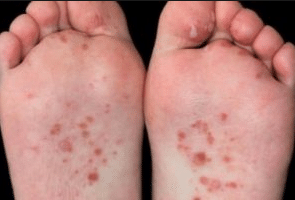

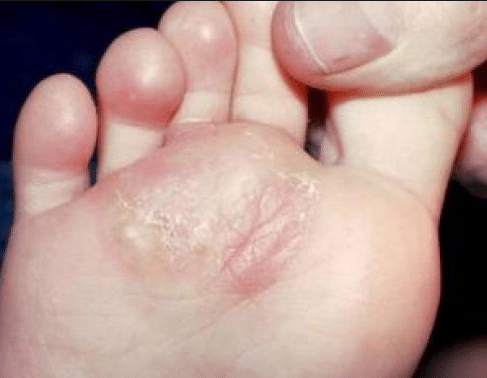
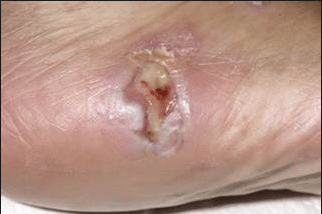
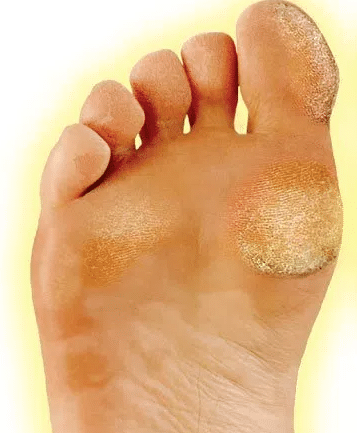
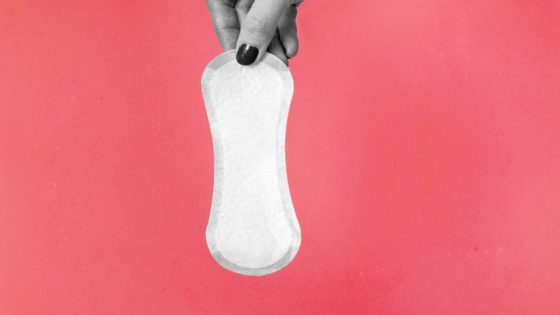

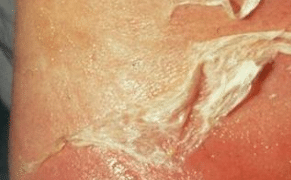



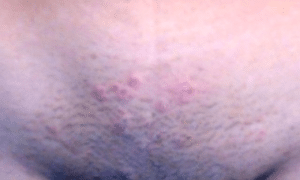

1 Comment